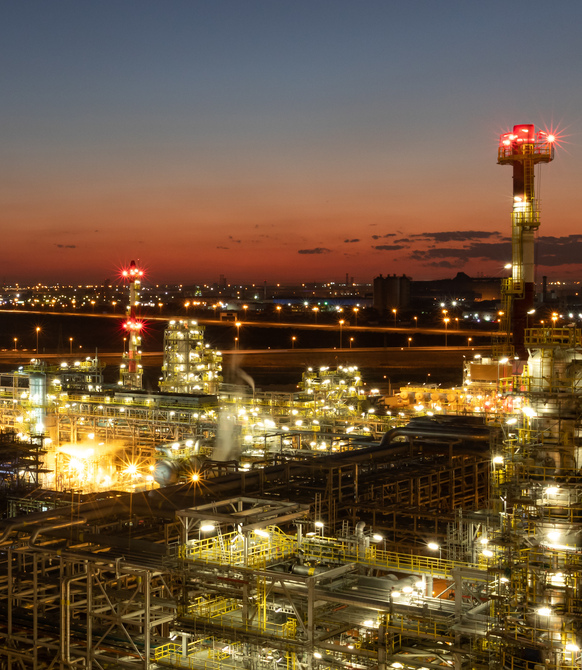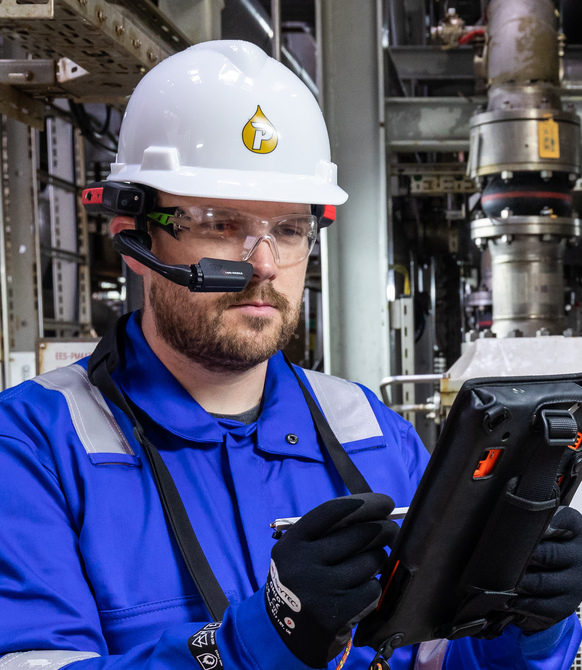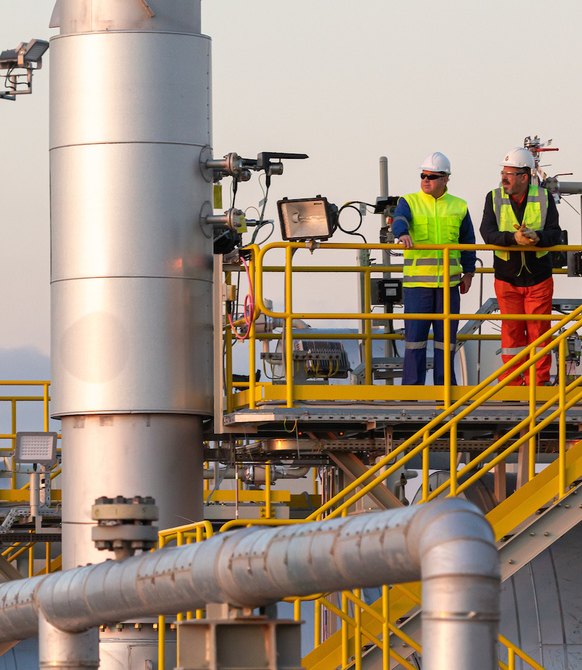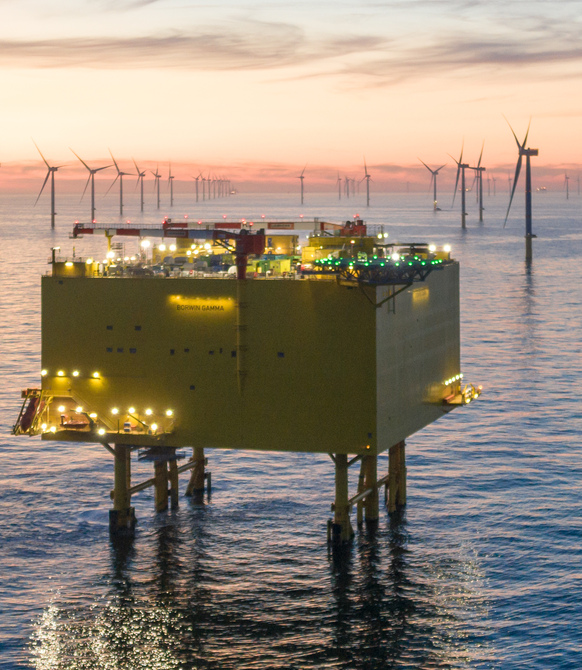Decarbonisation is an opportunity for innovation, value creation, and differentiation
The energy transition has top billing in almost every energy company across the Middle East and North Africa.
But what’s happening behind the scenes? How prominent is the subject in the everyday operations of today’s energy companies? To get a sense of what’s really happening, we speak to Elie, our Chief Operating Officer for Engineering and Construction, and John, our Chief Operating Officer for Energy Transition Projects. As one of the region’s leading energy services companies, we work with clients every step of the way, from concept to decommissioning.
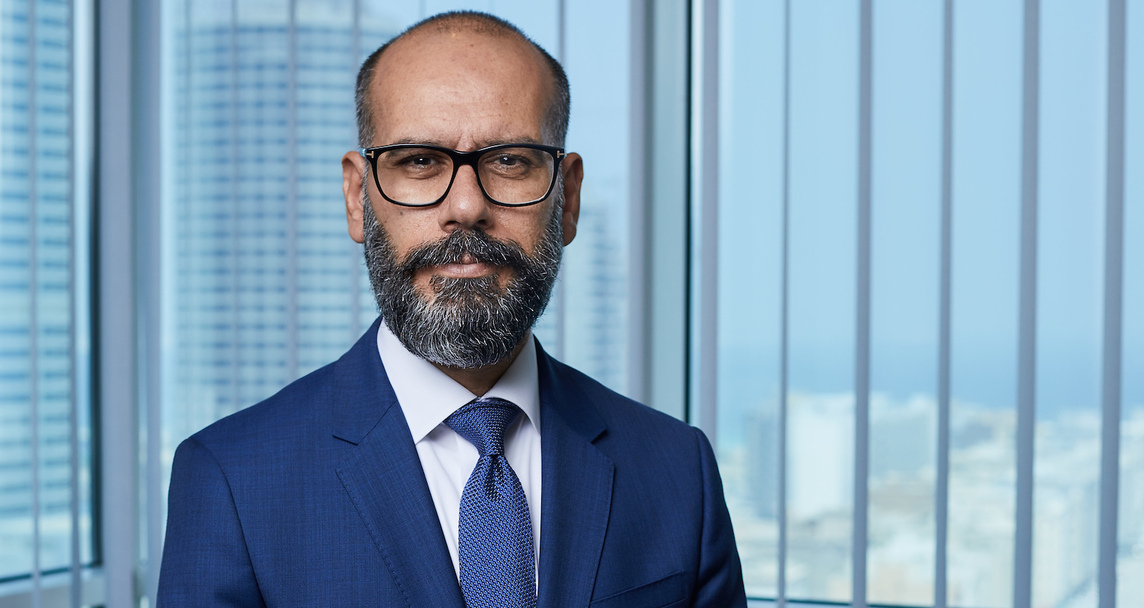
Elie Lahoud, Chief Operating Officer, Engineering & Construction
Almost everything we now do is related, in one way or another, to the energy transition. Our corporate purpose is to enable our clients to meet the world’s evolving energy needs. And we are delivering that purpose every day in everything we do.
It's not just about a long-term vision for energy transition and renewables projects, Elie emphasises. It’s also about practical, here-and-now measures to decarbonise the existing infrastructure. “The fact is, for some facilities, the operational emissions can add up to 40% of the full lifecycle emissions of the energy produced. So, there’s huge scope to reduce the industry’s carbon intensity whilst at the same time supporting the development and implementation of the next generation of lower-carbon energy-producing facilities. There are also many readymade solutions. Aside from the retrofit of flaring-mitigation measures and the electrification of upstream assets, there is a real appetite across the region for ambitious carbon capture, utilisation and storage (CCUS) projects for existing processing facilities. As COP28 draws near, we expect further significant, at-scale opportunities to emerge. These are the type of discussions we are having with every client. It’s become central to everything we do.”
At Petrofac, we recognise that irrespective of the exact pace and nature of the energy transition, the world will continue to demand hydrocarbons, and MENA will be capable of producing them at the lowest possible marginal cost and the lowest levels of carbon intensity. But we also know the world will move at scale to renewable and low-carbon energy sources, and believe the transition represents a clear opportunity for innovation, value creation, and differentiation.
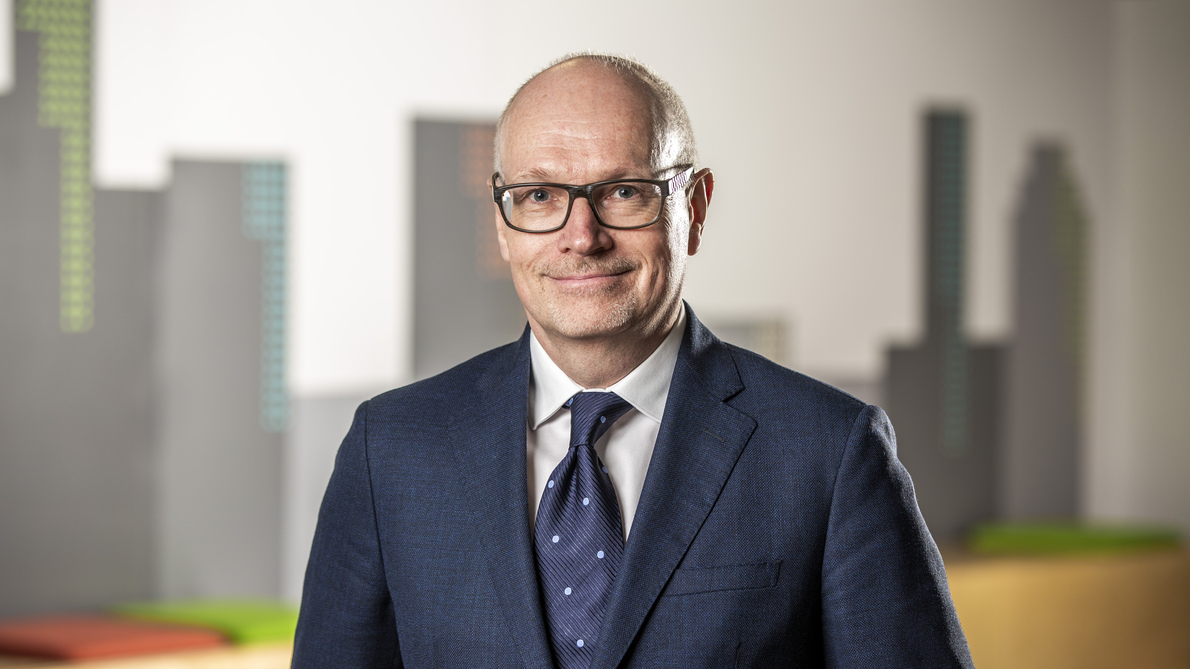
John Pearson, Chief Operating Officer, Energy Transition Projects
We’ve already moved well beyond the theoretical. The 13 billion Euros Framework Agreement we signed alongside our partner Hitachi Energy with Transmission System Operator TenneT, which covers HVDC platforms and grid connections for a vast offshore wind grid expansion in the North Sea off the Netherlands and Germany, is the biggest in our 42-year history. The 2GW Programme will contribute substantially to the Dutch, German and European offshore wind targets.
Meanwhile, the momentum behind hydrogen is also growing, explains John. “Through hydrogen, there is clear potential to decarbonise more of the world’s industry, heavy transport, aviation, shipping and energy storage, and we have been involved in several pioneering opportunities around the world. Given recent developments, including the creation of the International Hydrogen Trade Forum, which has strong representation from the Middle East, a global consensus is now emerging on critical considerations like trade and standards. Significant investments in infrastructure are starting to feel like an inevitability, which would play well to our skillset and experience.
At the same time, there is a burgeoning late-life asset management and decommissioning business, with us securing a series of prestigious projects as far afield as Australia, the Gulf of Mexico, and the North Sea. “As the energy transition gathers pace, this market will only get bigger,” says John.
With the energy industry in an upcycle, our series of recent new contract awards and a busy bidding pipeline, both executives are excited by the future and believe there are untold opportunities across the sector. “Decarbonising existing infrastructure is a big job. However, creating a new generation of energy assets is an even bigger one. With a wealth of relevant skills, the existing energy businesses are best placed to do that job. And those countries with an established energy mindset are best placed to support them,” concludes Elie.
This article was originally featured in ADIPEC News Show Daily - Day 1. Read the article


